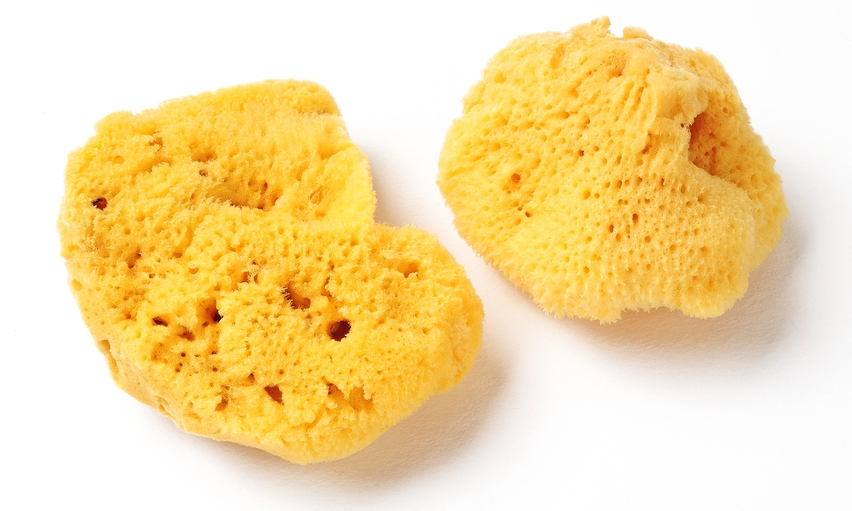Know Your Remedies: Spongia Tosta (Spong.)
 Common Names: Roasted sea sponge.
Common Names: Roasted sea sponge.
General Information
Spongia Tosta (Spong.) is a remedy for dry mucous membranes (mouth, nose, throat, and larynx), dry coughs, swollen or inflamed glands, and types of respiratory and cardiac (heart) problems. Symptoms often commence or worsen before midnight and lying on the right side but improve for warm drinks and food or lying on the back. The person frequently feels chilly.
Mental-Emotional Symptoms
- Anxiety or fear of heart disease, suffocation, and death – often with a sense of uneasiness around the heart.
- Wakes at night with fear of suffocation.
Throat
- Sore throat worse for sweets.
- Laryngitis.
- Dry tickling that causes a cough.
- Constriction in throat, especially on waking.
- Swelling of the thyroid gland.
Chest
- Palpitations
Respiratory
- Dryness of mucous membranes in nose, throat and chest.
- Colds descend and affect the larynx (vocal cords).
- Dry asthma.
- Asthma better for leaning forward and pulling head backwards to breathe.
- Types of tuberculosis.
Cough
- Dry cough – hollow, crowing, or croupy.
- Like a seal’s bark or a saw being pulled through wood.
- Relieved by warm food or drinks.
Glands
- Types of goitre and hyperthyroidism.
- Types of testicular disorders.
Genitals
- Swelling or inflammation of the testes, epididymis, and spermatic cords.
Sleep
- Wakes with a suffocating feeling either from tightness in the throat, croup, cough, or from asthmatic or cardiac problems. ‘Sleeps into an aggravation’.
Where do I find it?
Spongia Tosta (Spong.) is available from our online store as a single remedy in either pills or liquid, and as part of the following Complexes (combination remedies): Cough (Dry); Croup (Simple).
Home Treatment Guidelines
Acute, Self-Limiting Conditions
Conditions like colds or minor injuries, which are short-term and typically improve on their own, can be managed at home with homeopathy. However, in emergencies or if symptoms worsen, contact your healthcare provider.
Chronic Conditions
These home treatment instructions do not apply for ongoing issues, whether mentioned above or not, like persistent allergies or chronic pain. You should consult a qualified homeopath for a personalized treatment plan to achieve the best results with homeopathy for chronic conditions.
How to Take the Remedy for Acute Conditions
- Take one pill or five drops of the remedy. The frequency depends on symptom severity. As examples:
- For life-threatening symptoms, take every 1 minute and seek emergency help immediately.
- For mild symptoms, take every 4 hours.
- Stop taking the remedy once you feel better. Resume if symptoms return.
- If no improvement after four doses, choose a different remedy or consult a professional homeopath.
- For more details on dosing, refer to: How Often to Dose with a 30C Homeopathic remedy.
- For information on the different potencies, read: Guidelines on which potency to use
Additional Notes From Past Masters
Homeopathy is a 200-year-old system of medicine. Early homeopaths recorded detailed notes on how remedies worked, including initial tests, remedy relationships, and their experiences. These writings were shared to improve homeopathic practice and now offer fascinating insights into past uses of homeopathy. Here’s an example, edited and modernised for clarity, from Leaders In Homoeopathic Therapeutics (1898) by E. B. NASH M.D.:
Leaders In Homoeopathic Therapeutics by E. B. NASH M.D.
Spongia Tosta
Croup cough; sounds like a saw driven through a board; < on awakening out of sleep. Awakens out of sleep with a sense of suffocation, with violent loud cough, great alarm, agitation, anxiety and difficult respiration. Cough < talking, reading, singing, swallowing, lying with head low. * * * * * This is not a remedy of very wide range, so far as yet known, but is of such marked utility within its range that we could not afford to lose it. Its action upon the respiratory organs is first to be considered. It first attacks the larynx, extends from there to the trachea, bronchial tubes and into the air cells of the lungs themselves. Next to Aconite it is the remedy, oftenest indicated in croup. The cough is dry and sibilant, or sounds like a saw driven through a pine board, each cough corresponding to a thrust of the saw. Croup often comes on after exposure to dry, cold winds. It generally comes on in the evening, with high fever, excitement and fearfulness. For this cause and these symptoms Aconite is the first remedy, and in the 30th or 200th cures a great majority of cases without the aid of any other remedy. But if after a few doses, or a reasonable time, it does not alleviate, and the case continues to grow worse, and the paroxysms of cough and suffocation come on oftener, and especially on awakening out of sleep, Spongia is generally the next remedy. I live in a croupy climate and district, and after experimenting for thirty years, first with the low, then with the higher preparations, affirm that the 200th potency of this remedy does better work in croup than the lower preparations. I often give either of these remedies (Aconite or Spongia), according to indications, as often as once in fifteen minutes in watery solutions until amelioration, and then lengthen the intervals between doses according to amelioration. After the Croup becomes loose, but still retaining some of its croupy sound, Hepar sulphuris comes in, especially if inclined to get worse after midnight or in the morning hours. If the case inclines to relapse, or gets a little more croupy every evening, Phosphorus will often finish the cure. In the laryngitis or bronchitis of adults, Spongia is as useful as it is in the case of croup in children. There is a great hoarseness, some soreness and burnings and the cough is worse on talking, reading, singing or swallowing. I often find it particularly useful after Belladonna has improved the sore throat which often precedes the laryngeal or bronchial trouble, and which is generally brought on by colds so often contracted here in our northern climate. In chronic affections of the respiratory organs, which may finally lead to consumption, Spongia vies with Phosphorus, Sanguinaria and Sulphur. There is soreness, burning, rawness and heaviness in the chest, while the cough is worse in the evening, from cold air, talking, singing or moving, and better from eating and drinking warm things. I will not attempt to give all the symptoms for its use in respiratory diseases, but proceed at once to its remarkable action upon the heart. I have never done better work with any remedy in valvular disease than with Spongia. “Awakes out of sleep from a sense of suffocation, with violent, loud cough, great alarm, agitation, anxiety and difficult respiration” is a key-note and is frequently met in valvular affections. No remedy, not even Lachesis, can do better here. Not only are these paroxysms relieved or stopped, but valvular murmurs of years’ standing have disappeared under the action of Spongia. Cannot lie with head low is characteristic, also sleep into the paroxysm (Lachesis). The dry, chronic, sympathetic cough of organic heart disease is oftener and more permanently relieved by this remedy than by Naja. Spongia is also a good remedy for goitre, with sense of suffocation after sleep.







